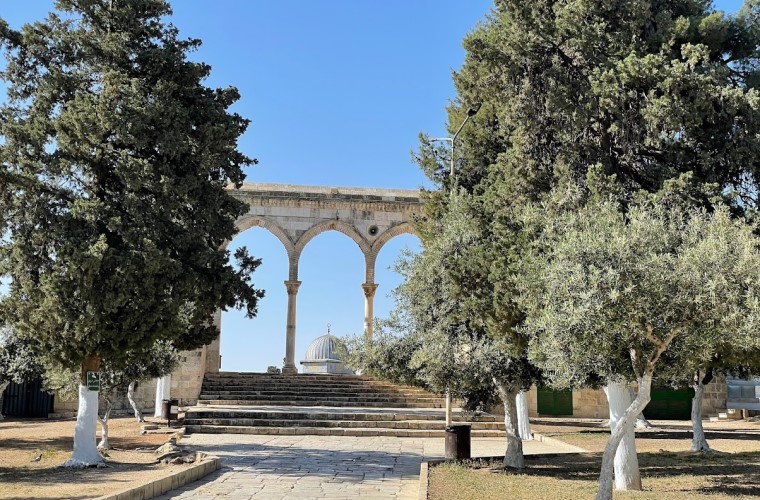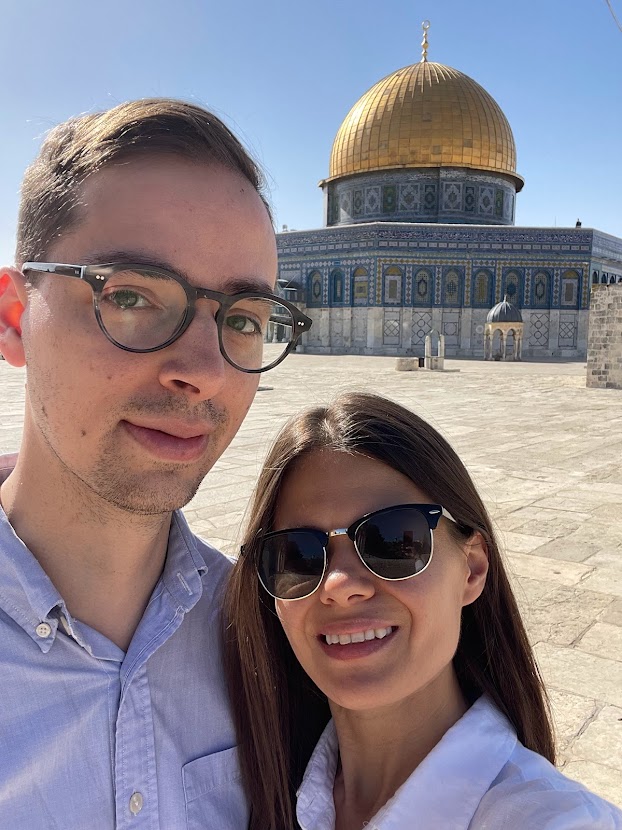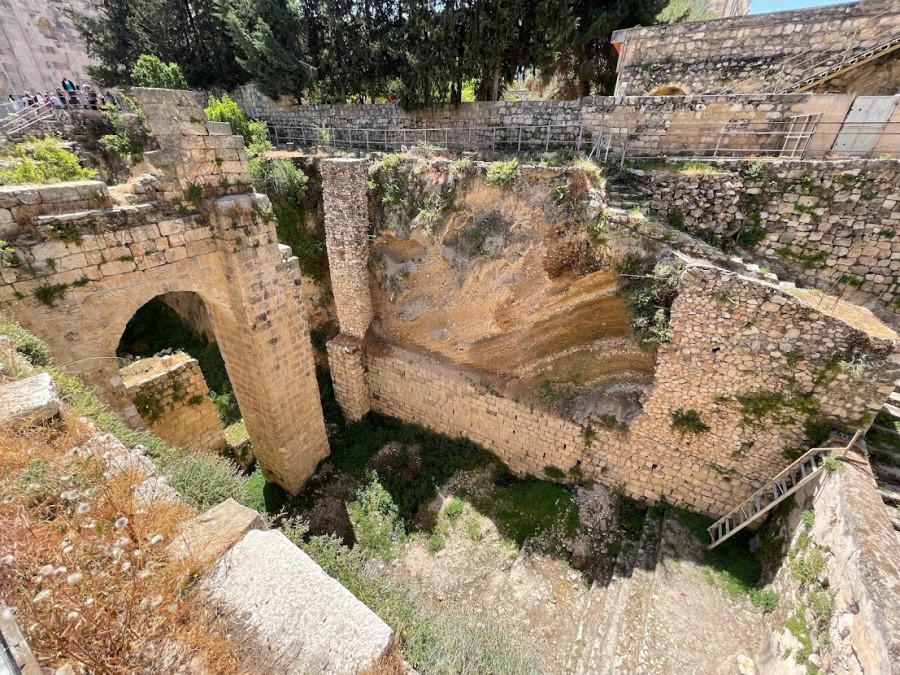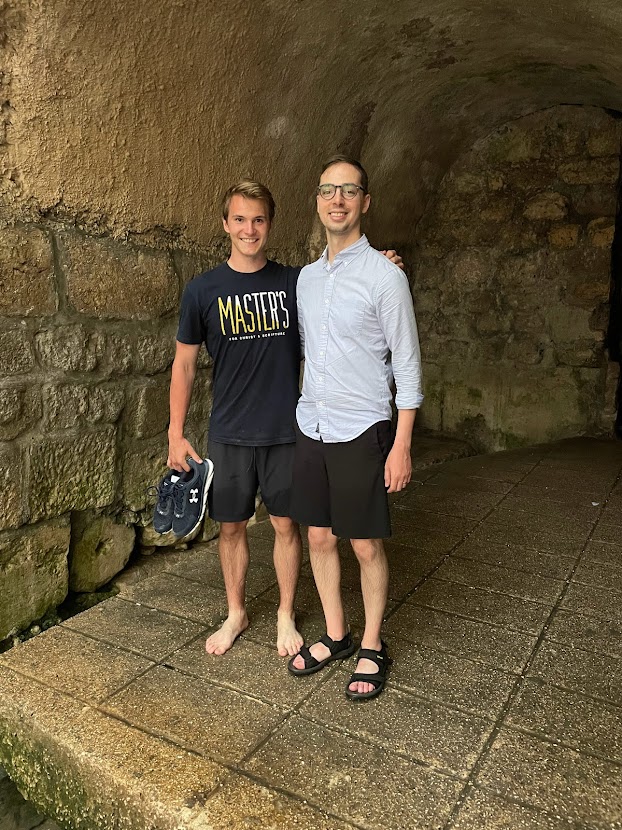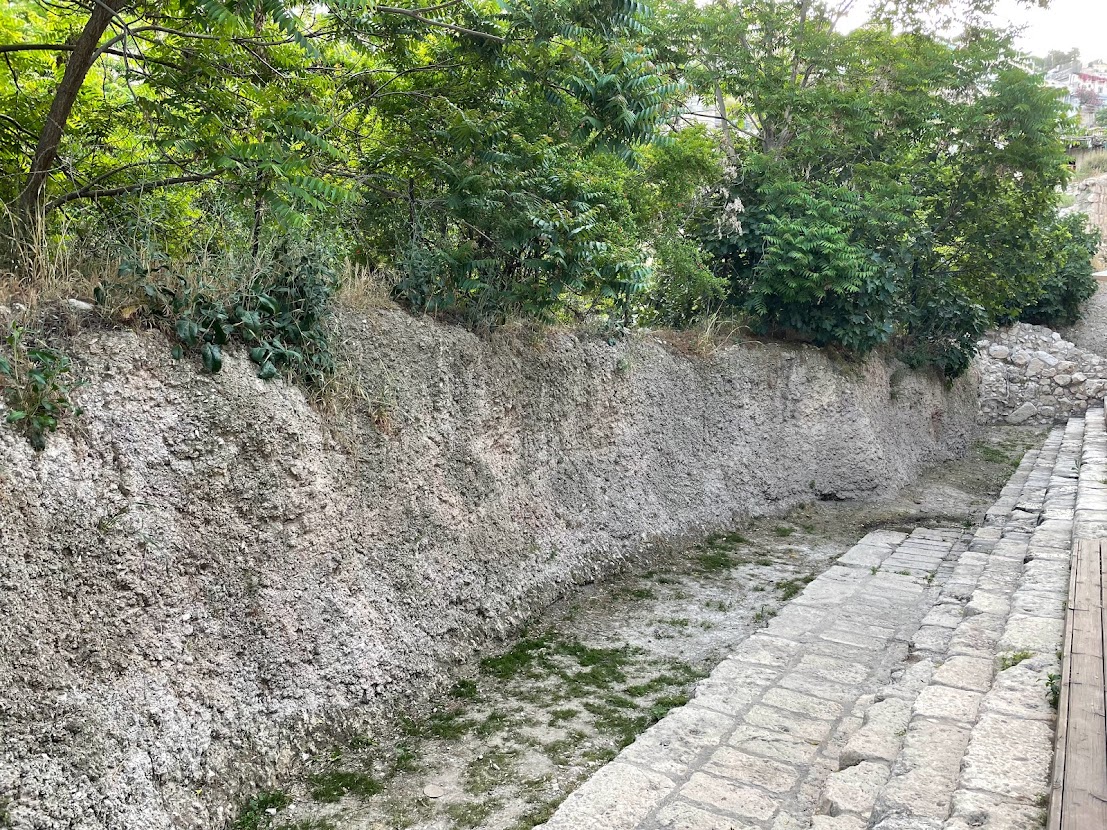Shalom!
Today’s itinerary focused on Jerusalem’s eastern hill, the oldest and most important part of Jerusalem throughout Bible times. We started in the north and moved our way south as the sun grew hot and challenged our endurance.
We started our morning by finally visiting the Temple Mount. There is too much to write about the temple area, gates, and supporting structures in one paragraph, so for now I’ll stick to a few bare impressions. The raised temple platform as built by Herod the Great (and recreated to some extent by later Muslim rulers) is very large, between 25-30 American football fields in area. Aside from the grand expanse of space, however, the modern site is not quite as I expected with so many olive trees (see cover photo), stray cats, and trash cans throughout the place. The Dome of the Rock, the decorative mosque which dominates the central area of the platform, likely sits on the exact site of the destroyed Jewish temple and the lost Holy of Holies.
Close by the Temple Mount to the NW is the partially uncovered Pool of Bethesda, where Jesus once healed a lame man (John 5:1-17). The pool was actually two large cisterns for collecting rain water (80 feet deep in the deepest areas); the pools were perhaps also fed by a small underground spring. The southern pool (and perhaps the northern pool, too) had steps on the west side for wading in and for performing ritual baths. Crusaders later built a church over and between the two pools. The ruin of the southern pool is visible today.
Below the Temple Mount on the eastern hill is the City of David, the oldest and original section of Israelite Jerusalem. Though part of this section has modern buildings and homes on it today, archaeologists have discovered a large stone structure at the top of the City of David that was likely King David’s fortress-palace. This building’s height over the city played a key defensive function but also inadvertently led to David’s great sin (see 2 Sam 11:2). Elsewhere in the City of David, archaeologists have discovered a giant support structure for David’s palace, various royal clay seals, a column capital decorated in the royal style, and the house of an ancient royal bureaucrat. These discoveries have affirmed several specific historical details in the Bible and are consistent with the Bible’s overall historical narrative.
One challenging but refreshing part of our day was walking through Hezekiah’s Tunnel. When King Hezekiah prepared for Assyria’s invasion around 714 BC, he didn’t just build walls, he also diverted the waters of the Gihon Spring on the edge of Jerusalem underground to a pool area inside the city, what would come to be known as the Pool of Siloam (cf. 2 Chronicles 32:30). To do this, Hezekiah’s men, armed with only simple hammers and chisels, carved a 1750 foot tunnel through mountain rock in just three years. The work is still regarded as an engineering marvel today. The tunnel is pretty narrow, and at times quite short in height. Cool water still flows through it, mostly to mid-calf.
Our final site for the day was the uncovered portion of the Pool of Siloam, the outlet of Hezekiah’s tunnel in southern Jerusalem. The Pool of Siloam is where Jesus once sent a faith-filled blind man to wash away the clay Jesus had made and placed on the man’s eyes (John 9:1-41). The pool was very large, trapezoidal in shape, and featured ten steps all around for wading in, thus serving as a mikvah, or ritual bath site, like the Pool of Bethesda.

